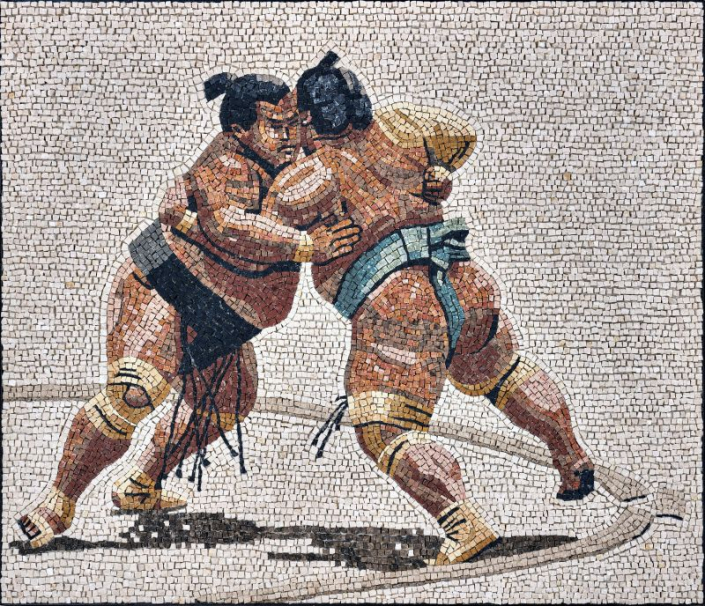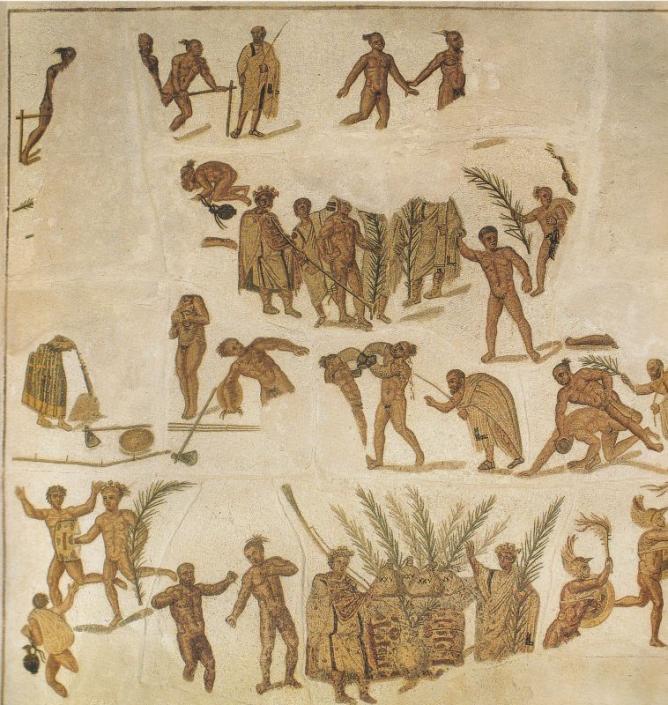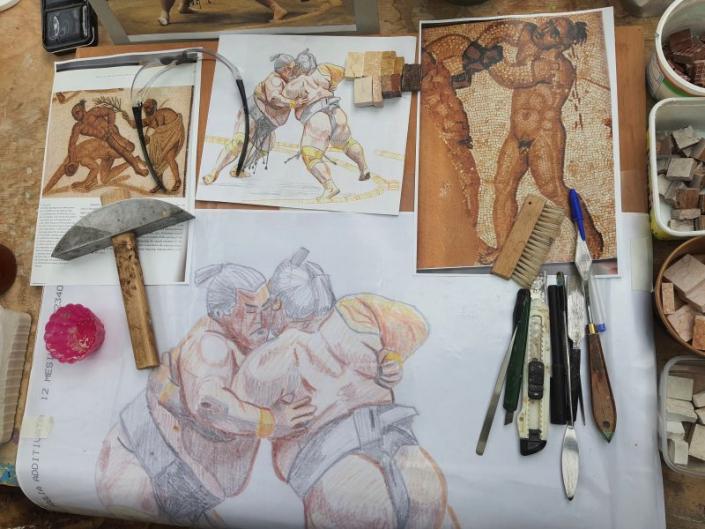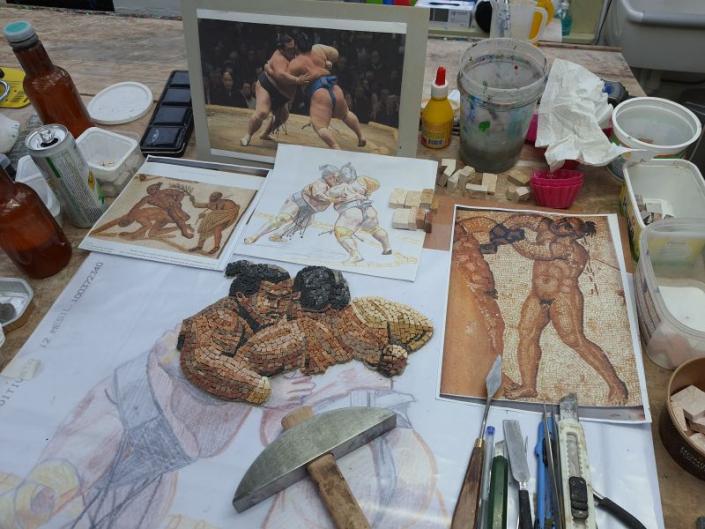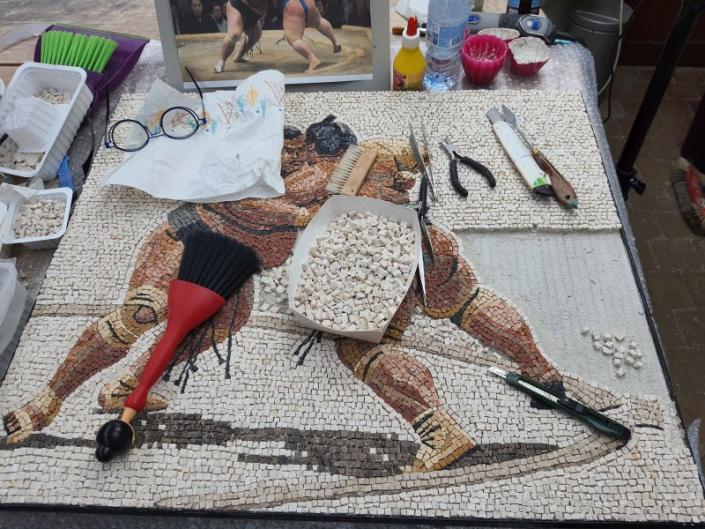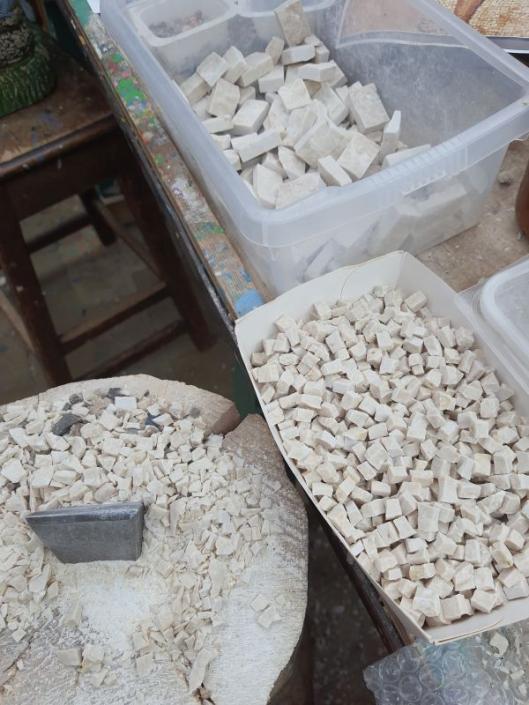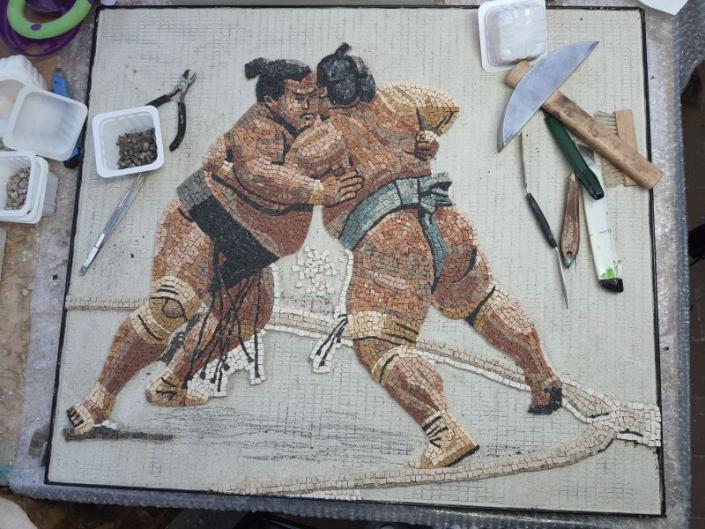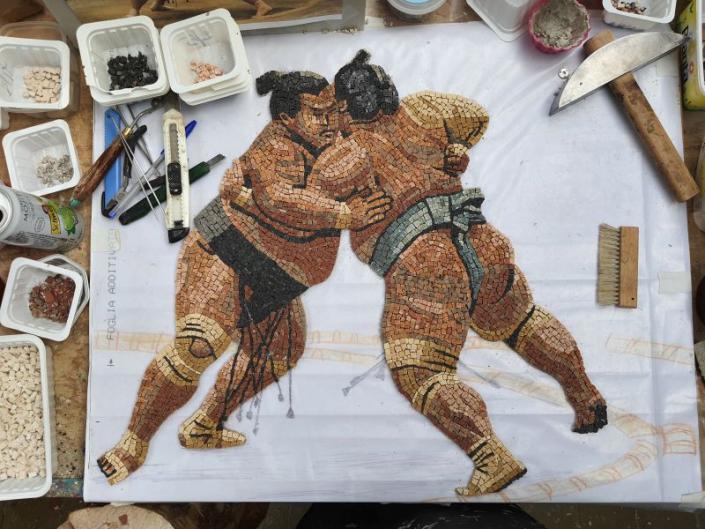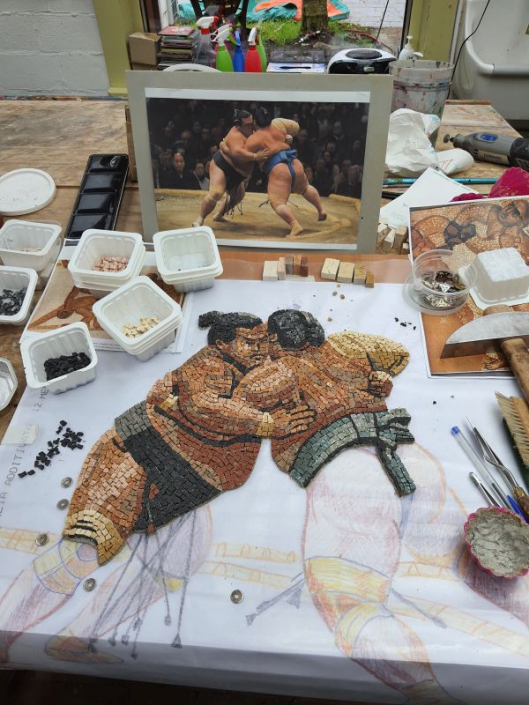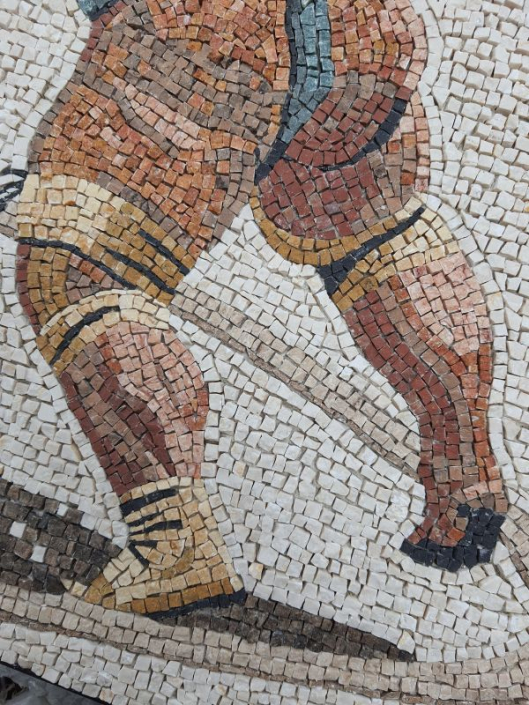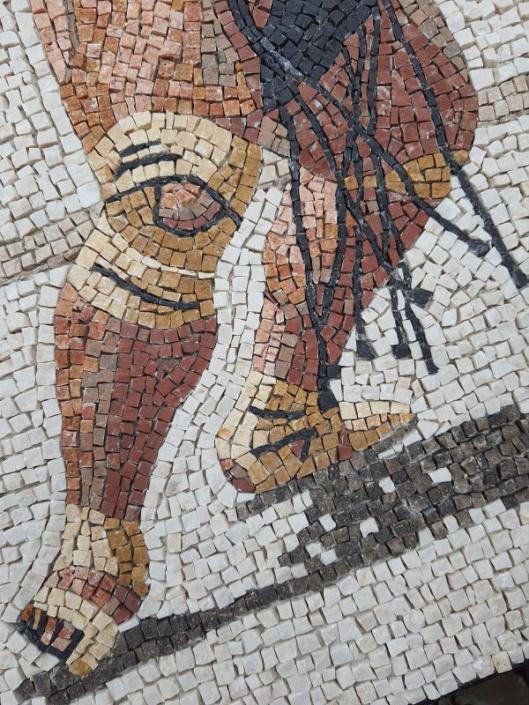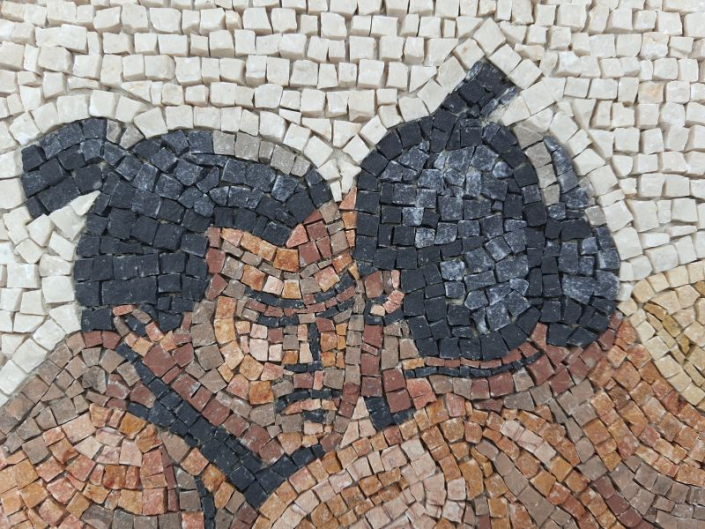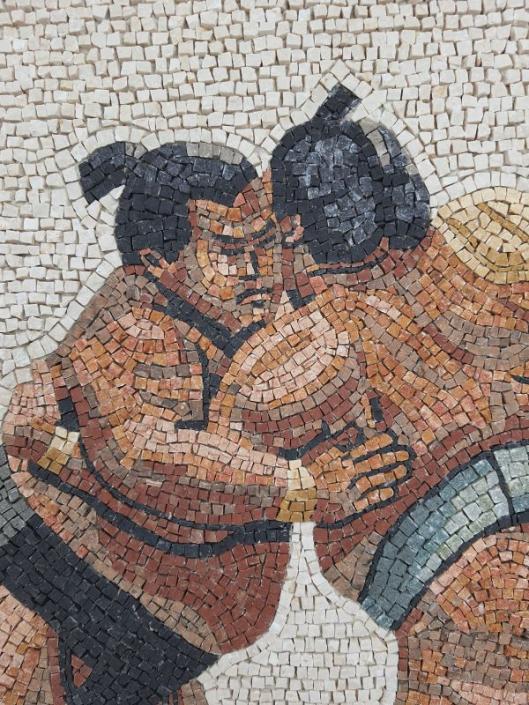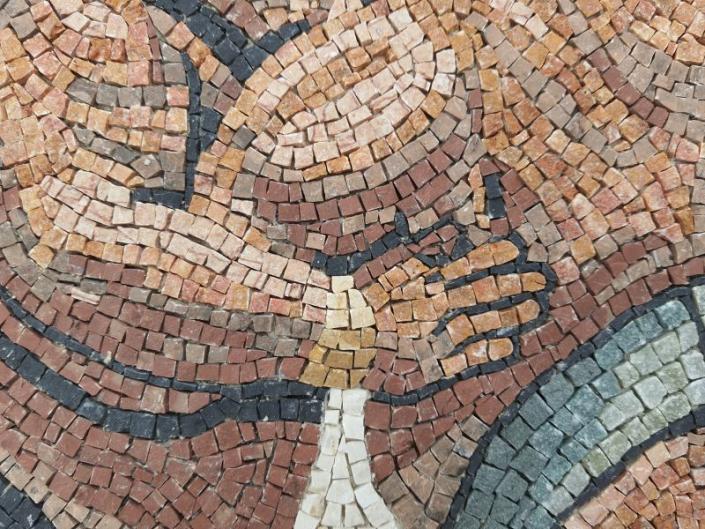When I thought about the Roman mosaics and what was depicted, I came to the conclusion that, apart from technology and electronics, which have undergone a very large development, not much has really changed when it comes to bread and play. ‘ arrives. The Romans regularly portray sports. There was also wrestling and boxing at that time, which was depicted in mosaic works.
So I wondered, if the Romans had continued to make mosaics, or better yet if they were to mosaic today what we see around us, what would they all represent? This work is therefore the first in a series.
Roman mosaic with a contemporary twist.
Next to my mosaic you see the image of a Roman mosaic that served as inspiration in terms of color limitation etc., a word of explanation:
The most complete and realistic document of combat iconography to date anywhere in the Roman world is undoubtedly the mosaic found in the Gafsa region of southwestern Tunisia. Dating from 239 AD. This pavement is a mosaic that adorned the floor in one of the rooms of a bath complex in a small ancient settlement about 60 kilometers east of the town of Capsa. Square in shape (side measures 4.65 meters), the central scene illustrates figures on a white background, divided into four registers superimposed. Despite the gaps, especially in the upper right corner of the sidewalk, the composition as a whole reveals a detailed description of the sequence of athletics and combat spectacles. It consists of fourteen fully or partially preserved vignettes.
It always amazed me how the Romans managed to work reasonably realistically despite the limitation in color and the recurring rules in terms of laying method and finish. And therein lies my challenge in making my ‘new’ Roman-looking mosaic(s).
The idea is that you see the mosaic and think you see a Roman mosaic but if you look further or think about it you realize that is not possible since, in this case, sumo wrestlers did not exist at that time.
Original photo by: not found

